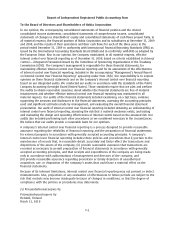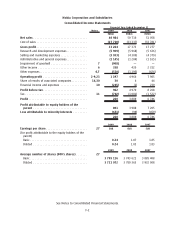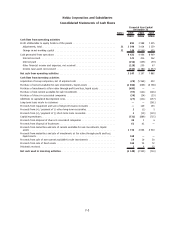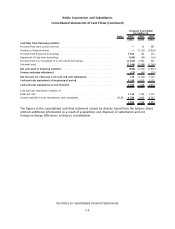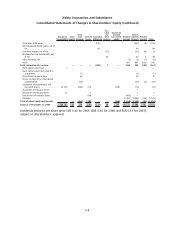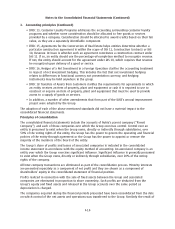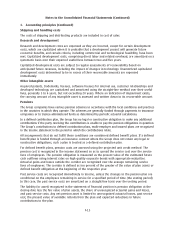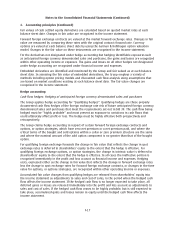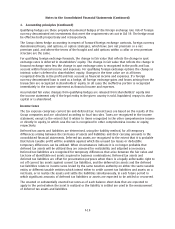Nokia 2009 Annual Report Download - page 184
Download and view the complete annual report
Please find page 184 of the 2009 Nokia annual report below. You can navigate through the pages in the report by either clicking on the pages listed below, or by using the keyword search tool below to find specific information within the annual report.1. Accounting principles (Continued)
• IFRIC 13, Customer Loyalty Programs addresses the accounting surrounding customer loyalty
programs and whether some consideration should be allocated to free goods or services
provided by a company. Consideration should be allocated to award credits based on their fair
value, as they are a separately identifiable component.
• IFRIC 15, Agreements for the Construction of Real Estate helps entities determine whether a
particular construction agreement is within the scope of IAS 11, Construction Contracts or IAS
18, Revenue. At issue is whether such an agreement constitutes a construction contract under
IAS 11. If so, an entity should use the percentageofcompletion method to recognize revenue.
If not, the entity should account for the agreement under IAS 18, which requires that revenue
be recognized upon delivery of a good or service.
• IFRIC 16, Hedges of a Net Investment in a Foreign Operation clarifies the accounting treatment
in respect of net investment hedging. This includes the fact that net investment hedging
relates to differences in functional currency not presentation currency, and hedging
instruments may be held anywhere in the group.
• IFRIC 18 Transfers of Assets from Customers clarifies the requirements for agreements in which
an entity receives an item of property, plant and equipment or cash it is required to use to
construct or acquire an item of property, plant and equipment that must be used to provide
access to a supply of goods or services.
• In addition, a number of other amendments that form part of the IASB’s annual improvement
project were adopted by the Group.
The adoption of each of the above mentioned standards did not have a material impact to the
consolidated financial statements.
Principles of consolidation
The consolidated financial statements include the accounts of Nokia’s parent company (“Parent
Company”), and each of those companies over which the Group exercises control. Control over an
entity is presumed to exist when the Group owns, directly or indirectly through subsidiaries, over
50% of the voting rights of the entity, the Group has the power to govern the operating and financial
policies of the entity through agreement or the Group has the power to appoint or remove the
majority of the members of the board of the entity.
The Group’s share of profits and losses of associated companies is included in the consolidated
income statement in accordance with the equity method of accounting. An associated company is an
entity over which the Group exercises significant influence. Significant influence is generally presumed
to exist when the Group owns, directly or indirectly through subsidiaries, over 20% of the voting
rights of the company.
All intercompany transactions are eliminated as part of the consolidation process. Minority interests
are presented separately as a component of net profit and they are shown as a component of
shareholders’ equity in the consolidated statement of financial position.
Profits realized in connection with the sale of fixed assets between the Group and associated
companies are eliminated in proportion to share ownership. Such profits are deducted from the
Group’s equity and fixed assets and released in the Group accounts over the same period as
depreciation is charged.
The companies acquired during the financial periods presented have been consolidated from the date
on which control of the net assets and operations was transferred to the Group. Similarly the result of
F10
Notes to the Consolidated Financial Statements (Continued)



